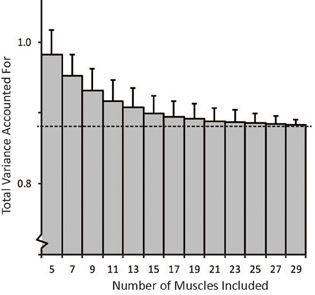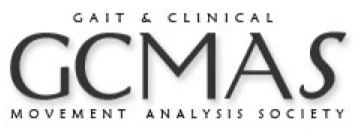Kat Steele presents at European Society for Motion Analysis in Adults and Children Conference:
Muscle synergy complexity is related to selective motor control in cerebral palsy
Glascow, Scotland (September 2-7, 2013)

Kat Steele presents at European Society for Motion Analysis in Adults and Children Conference:
Muscle synergy complexity is related to selective motor control in cerebral palsy
Glascow, Scotland (September 2-7, 2013)

Journal article accepted in Frontiers in Computational Neuroscience:
The number and choice of muscles impact the results of muscle synergy analyses
One theory for how humans control movement is that muscles are activated in weighted groups or synergies. Studies have shown that electromyography (EMG) from a variety of tasks can be described by a low-dimensional space thought to reflect synergies. These studies use algorithms, such as nonnegative matrix factorization, to identify synergies from EMG. Due to experimental constraints, EMG can rarely be taken from all muscles involved in a task. However, it is unclear if the choice of muscles included in the analysis impacts estimated synergies. The aim of our study was to evaluate the impact of the number and choice of muscles on synergy analyses. We used a musculoskeletal model to calculate muscle activations required to perform an isometric upper-extremity task. Synergies calculated from the activations from the musculoskeletal model were similar to a prior experimental study. To evaluate the impact of the number of muscles included in the analysis, we randomly selected subsets of between 5 and 29 muscles and compared the similarity of the synergies calculated from each subset to a master set of synergies calculated from all muscles. We determined that the structure of synergies is dependent upon the number and choice of muscles included in the analysis. When five muscles were included in the analysis, the similarity of the synergies to the master set was only 0.57 ± 0.54; however, the similarity improved to over 0.8 with more than ten muscles. We identified two methods, selecting dominant muscles from the master set or selecting muscles with the largest maximum isometric force, which significantly improved similarity to the master set and can help guide future experimental design. Analyses that included a small subset of muscles also over-estimated the variance accounted for (VAF) by the synergies compared to an analysis with all muscles. Thus, researchers should use caution using VAF to evaluate synergies when EMG is measured from a small subset of muscles. PDF

Kat Steele presents at Gait & Clinical Movement Analysis Society Conference:
Cartilage thickness decreases with crouch gait severity
Cincinnati, OH (May 14-17, 2013)

Kat Steele presents at Neural Control of Movement
Using musculoskeletal modeling and simulation to investigate the accuracy and reliability of muscle synergies
San Juan, Puerto Rico (April 17-20, 2013)

Kat Steele presents at International Symposium on Computer Methods in Biomechanics and Biomedical Engineering Conference:
The number and choice of muscles impact the results of muscle synergy analyses
Salt Lake City, Utah (April 2-6, 2013)